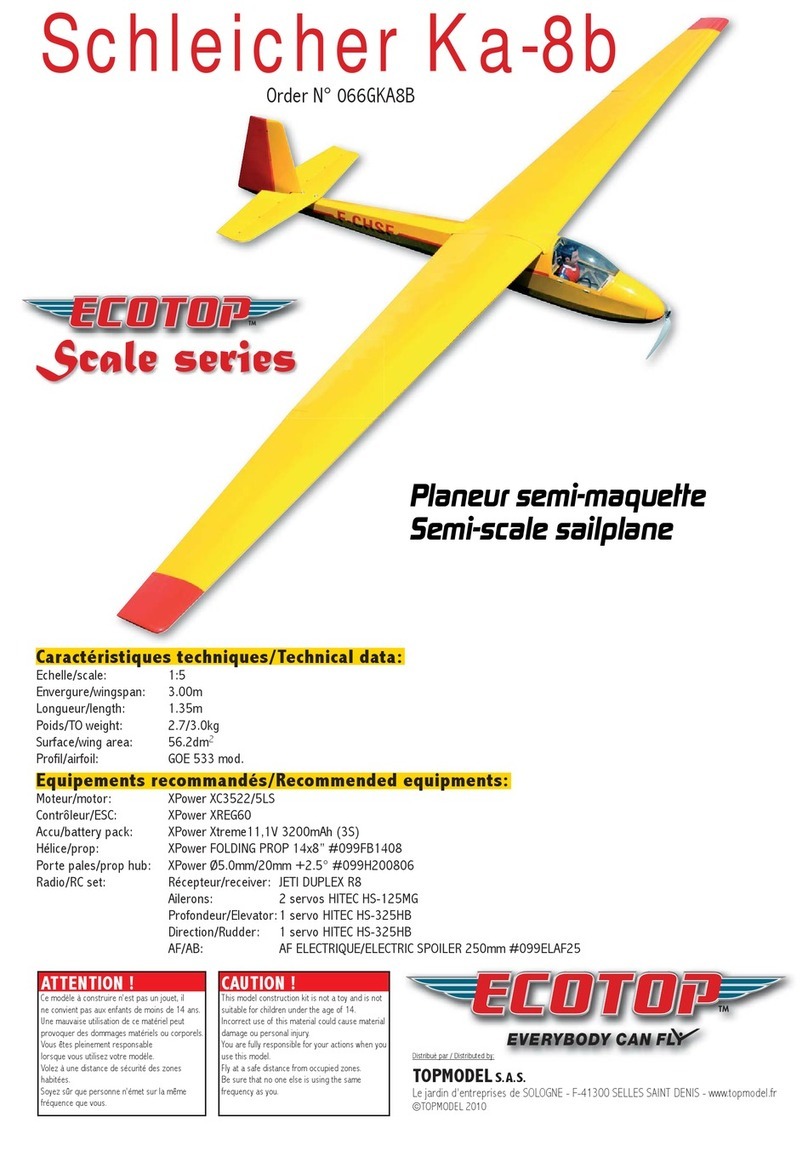
Balance: Check the centre of gravity position. This is a very important relationship between the CG
location and the stall characteristics of an airplane or knife-edge performance. CG location determines
the stall characteristics.
CG range from 42 to 47mm measured from the leading edge at the root of the wing.
In workshop, ready to fly, carry the model on the fingers on each side of the fuselage at the wing
root, after having drawn the balance marks.
If the model leans forwards (nose heavy), move the battery backwards.
If the model leans backwards (tail heavy), move the battery forwards, add some lead if
necessary.
The plane is correctly balanced when it leans very slightly forwards with the index on the
reference marks.
FLYING
Insert the wing joiner into one wing, then into the fuse and add the other wing. The dowels
ensure the correct incidence of the wings. You can use a white or clear tape to attach the wings
to the fuse, only at upper side.
Don`t forget to check the symmetry of the whole model. Once on the field, first check the
function of your RC set and check the range, too. Calm wheather is the best for the first flights.
Try hand launching, trim if required for optimal gliding. Provided that everything is in order, you
can go for the maiden flight, with a charged battery of course.
Besides the slope soaring it is possible to install a tow hook and use a set for high-altitude
launches for thermal sparing.
Set up:
Rudder function: +/- 30 mm
Elevator function: +/- 6 mm
Aileron function: +12/-5 mm, term flight -1mm
Flaps: crossing +2 mm, term flight -2 mm
Butterfly: flaps -15 mm, ailerons +8 mm, elevator -2 mm
Centre of Gravity: usually 42-47 mm from wing leading edge
Have a lot of fun and many happy landings with your ASH-26

























